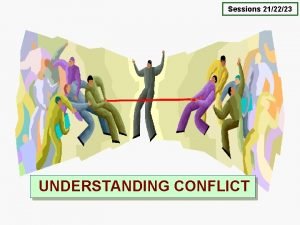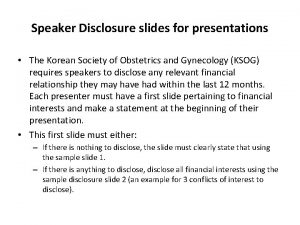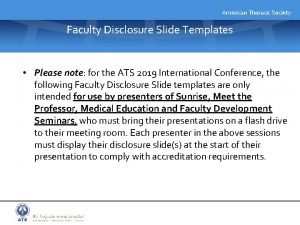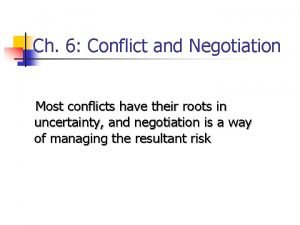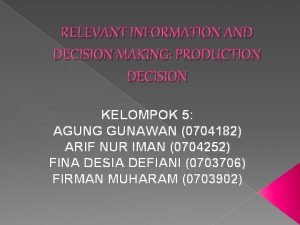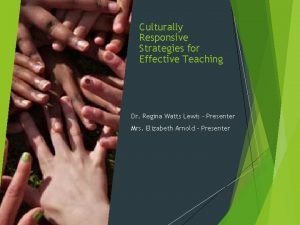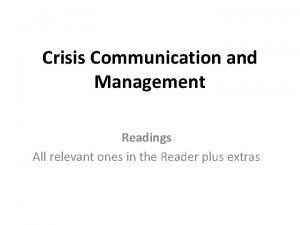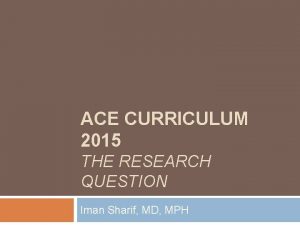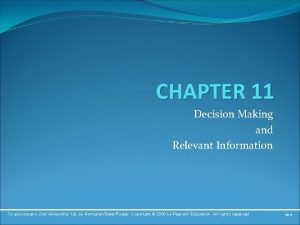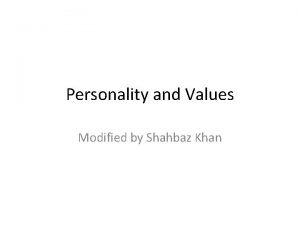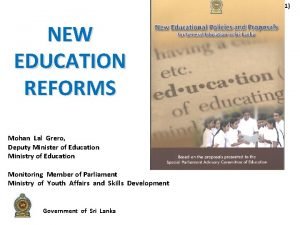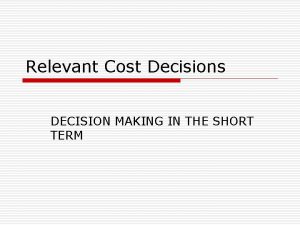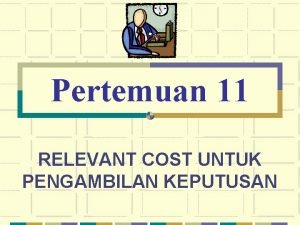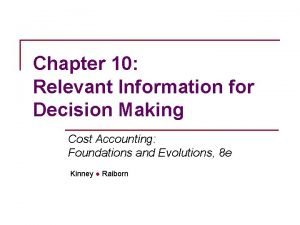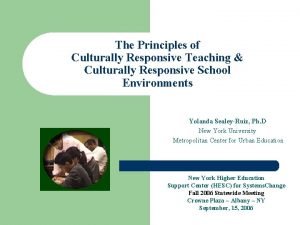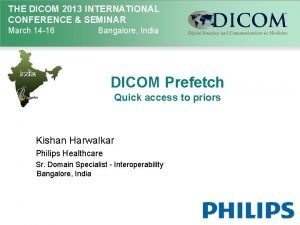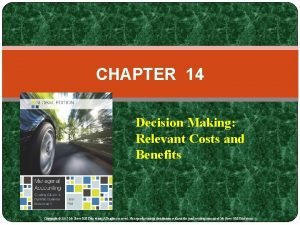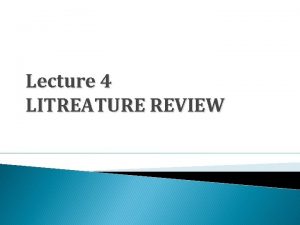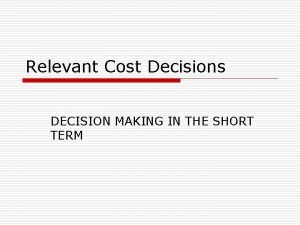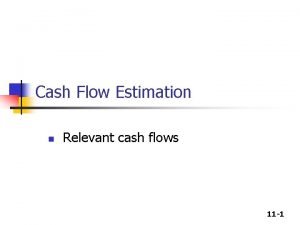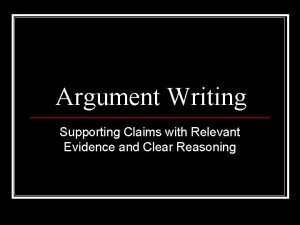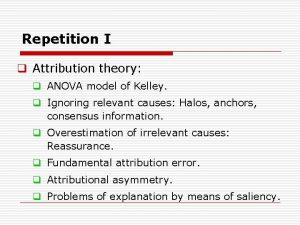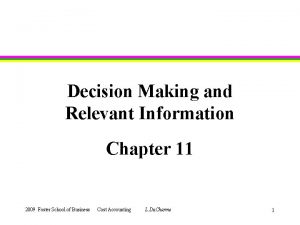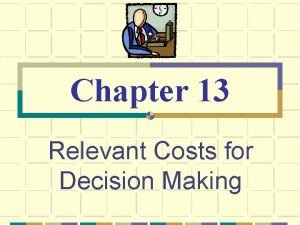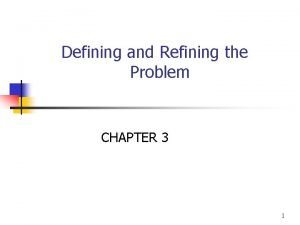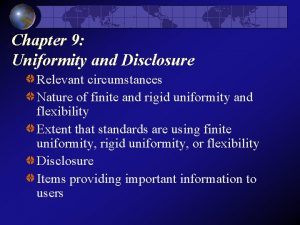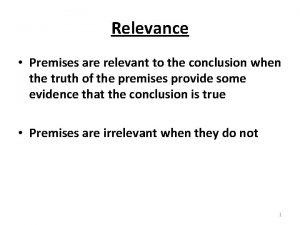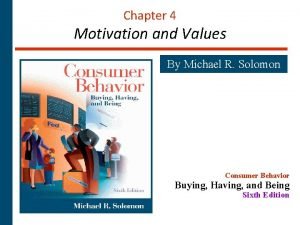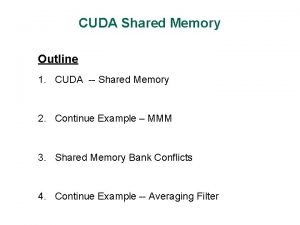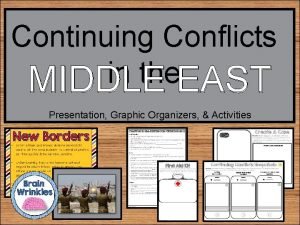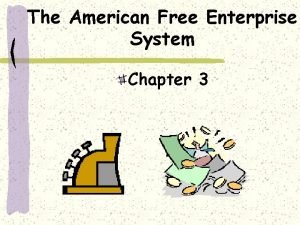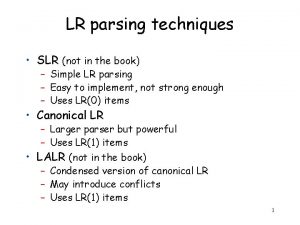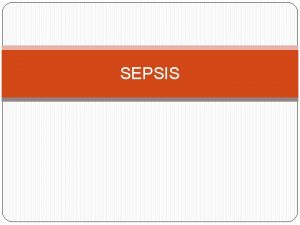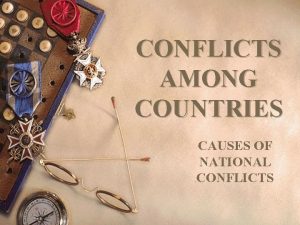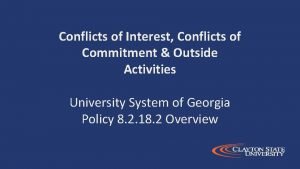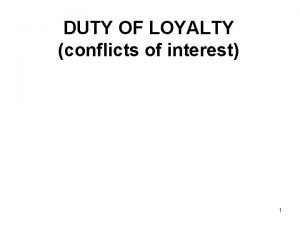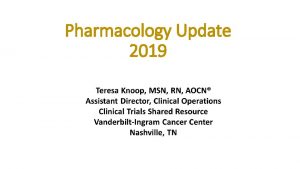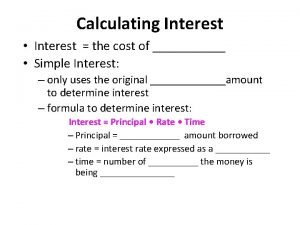Disclosures I have no relevant conflicts of interest







































































- Slides: 71


Disclosures • I have no relevant conflicts of interest to disclose • Acknowledgements • Dr. Chris Wong • Dr. Leo Mascarenhas • Dr. Steve Joffe Copyright © 2019 by ASPHO

This will be a talk in two parts • Domain 11: Core Knowledge in Scholarly Activities • Part 1= Ethics in research • Principles of research involving human subjects • Principles of consent and assent • Professionalism and misconduct in research • Part 2= Quality improvement • Project design • Data and measurement Copyright © 2019 by ASPHO

How do we know if human subjects research is ethically sound? Copyright © 2019 by ASPHO

Research • A systematic investigation, including research development, testing and evaluation, designed to develop or contribute to generalizable knowledge • Federal regulations 45 CFR 164. 501, 164. 508, 164. 512(i) Copyright © 2019 by ASPHO

Seven Requirements for Ethical Human Subjects Research Social or scientific value Copyright © 2019 by ASPHO JAMA 283: 2701, 2000 6

Seven Requirements for Ethical Human Subjects Research Social or scientific value Copyright © 2019 by ASPHO Scientific validity JAMA 283: 2701, 2000 7

Seven Requirements for Ethical Human Subjects Research Social or scientific value Scientific validity Fair subject selection Copyright © 2019 by ASPHO JAMA 283: 2701, 2000 8

Seven Requirements for Ethical Human Subjects Research Social or scientific value Scientific validity Fair subject selection Favorable risk-benefit ratio Copyright © 2019 by ASPHO JAMA 283: 2701, 2000 9

Seven Requirements for Ethical Human Subjects Research Social or scientific value Scientific validity Fair subject selection Favorable risk-benefit ratio Independent review Copyright © 2019 by ASPHO JAMA 283: 2701, 2000 10

Seven Requirements for Ethical Human Subjects Research Social or scientific value Scientific validity Fair subject selection Favorable risk-benefit ratio Independent review Informed consent Copyright © 2019 by ASPHO JAMA 283: 2701, 2000 11

Seven Requirements for Ethical Human Subjects Research Social or scientific value Scientific validity Fair subject selection Favorable risk-benefit ratio Independent review Informed consent Respect for potential and enrolled subjects Copyright © 2019 by ASPHO JAMA 283: 2701, 2000 12

#1 Social or Scientific Value • Study must ask an important question • Valuable for improving health and/or for basic scientific knowledge • Research is unethical if question is trivial, has already been answered, etc. Copyright © 2019 by ASPHO

#2 Scientific Validity • Even if question is important, study is unethical if methods aren’t likely to answer it • • not feasible poor outcomes measures inadequate sample size poor statistical analysis • Data produced must be valid and reliable Copyright © 2019 by ASPHO

#3 Fair Subject Selection • Historically, risky or non-beneficial research has disproportionately enrolled vulnerable populations • economically disadvantaged • ethnic minorities • mentally incapacitated, institutionalized • Conversely, exclusion of certain groups from research disenfranchises them from benefits of the knowledge gained • Vulnerable groups must not be over-burdened and the privileged must not receive preferential benefits Copyright © 2019 by ASPHO

#3: Fair Subject Selection • Three categories of vulnerable subjects are considered in the regulations: • Pregnant Women, Human Fetuses and Neonates involved in human subjects research • Prisoners • Children Copyright © 2019 by ASPHO

#4 Risk/Benefit Balance • Risks must be minimized • Benefits of a clinical trial must justify the risks • sometimes, risks clearly outweigh benefits for the participant • e. g. , most healthy-volunteer research Benefits to self Risks Copyright © 2019 by ASPHO

#4 Risk/Benefit Balance • Risks must be minimized • Benefits of a clinical trial must justify the risks • sometimes, risks clearly outweigh benefits for the participant • e. g. , most healthy-volunteer research Risks Copyright © 2019 by ASPHO Benefits to self Benefits to society

#4 Risk/Benefit Balance • Magnitude of risk of harm must be categorized • Influences role of IRB and consent • Minimal Risk Definition: • The probability and magnitude of harm and discomfort anticipated in research are not greater in and of themselves than those ordinarily encountered in daily life or during the performance of routine physical and psychological examination or tests such as: • Noninvasive imaging – MRI and ultrasound but not X-ray or CT scan • Venipuncture • Behavioral, neuropsychological or social surveys • Expedited IRB review may be possible Copyright © 2019 by ASPHO

#4 Risk/Benefit Balance • Research involving more than minimal risk but preserving the prospect of direct benefit to the individual subjects • Examples: – Clinical trials involving drugs and devices – Risk is justified by benefit- anticipated benefit is as favorable as the alternative – Arrangements for assent and consent Copyright © 2019 by ASPHO

#4 Risk/Benefit Balance • Research involving greater than minimal risk and no prospect of benefit to individual subjects but likely to yield generalization about the subjects disorder or condition • Must represent only a minor increase over minimal risk • Procedures must be inherent in the treatment of the condition • Examples involve drawing extra tissue samples –blood sampling in children at a greater frequency than is allowed normally. Copyright © 2019 by ASPHO

#5 Informed Consent • Ensure respect for individuals’ values & preferences in decisions about their medical care & research participation • View as ongoing process, not one-time event • Valid informed consent includes numerous components Copyright © 2019 by ASPHO

#5 Informed Consent • Voluntariness • Freedom from coercion • Decision-making capacity • Disclosure of material information • Distinction between research and standard practice • Understanding • Ability to make a decision Copyright © 2019 by ASPHO 23

#5 ½: Assent for minors • In human subjects research involving children, we must consider assent. • Assent of child subjects (< 18 years of age) must be elicited, when they are capable of providing such assent. • After learning what will happen to the child and why, assent is the child’s process of making an affirmative decision to participate in research. • Permission of one or two parents is also required, depending on the research category. 45 CFR 46. 408 Copyright © 2019 by ASPHO

#5 ½: Assent for Minors • Assent should include the following elements. • Information that helps the child to understand why he or she is being asked to participate in the research. • A description of what the child will experience from the perspective of the child. • A statement that the child has a choice to participate and may withdraw at any time for any reason. 45 CFR 46. 408 Copyright © 2019 by ASPHO

5 ½: Assent May Not be Needed if…. • Child not capable of giving assent • In determining whether a child is capable of assenting, consider age, maturity, and psychological state of the child. • Medical circumstances • Treatment is not available outside the research protocol, and it is best available therapy. • Assent waived by IRB 45 CFR 46. 408 Copyright © 2019 by ASPHO

#6 Respect for Potential and Enrolled Subjects • Permitting withdrawal from research • Protection of privacy, confidentiality • Informing subjects of newly identified risks or benefits • Informing subjects of results • Maintaining welfare of subjects Copyright © 2019 by ASPHO

#7 Independent Review • Institutional Review Boards (IRBs) • Independent review is mandated by federal law for most research with human subjects • IRBs review studies at inception • science, risk/benefit ratio, informed consent • IRBs also monitor studies as they proceed • continuing reviews at least annually • reporting of adverse events, unexpected problems Copyright © 2019 by ASPHO

#7 Independent Review • Oversees potential conflicts of interest • Investigators balancing many important priorities that may come into conflict • • Research subjects Academic career Clinical work • Serve to protect members of society Copyright © 2019 by ASPHO

Studies Exempt from IRB Review • Activities not meeting definition of research • Use of existing data or specimens if available to the public or data without personal identifiers. • Taste or food quality and consumer acceptance studies. • Research conducted in educational settings, involving normal educational practices. • Observation of public behavior, without intervention, and if subjects can not be identified. Copyright © 2019 by ASPHO

Studies Exempt from IRB Review Systematic investigations which are not Research: • Public health interventions. • Quality assessment of health care efforts. • Resource utilization review. • Evaluation of medication adverse events. • The decision whether or not a study is exempt is determined by the IRB, not by the investigator. • IRB judgment that a study is exempt is good for 2 years. • If the study continues longer than 2 -years, investigators must reapply for exemption. Copyright © 2019 by ASPHO

Belmont Report (1978) • Ethical Principles and Guidelines for the Protection of Human Subjects • Respect • individuals should be treated as autonomous agents and persons with diminished autonomy are entitled to protection • Beneficence • respecting the individual’s decisions and protecting them from harm but also securing their well-being • Justice • Receipt of benefits of research and who bears its burdens Copyright © 2019 by ASPHO

Application of the Belmont Report RESPECT Acknowledge autonomy and protect those with diminished autonomy BENEFICENCE Protect from harm and secure well-being JUSTICE Fairness in distribution Consent or assent Risk/Benefit Analysis Subject selection 2017 Review Course, Research Ethics, Leo Mascarenhas, MD MS Copyright © 2019 by ASPHO

What constitutes misconduct in scientific research? Copyright © 2019 by ASPHO

Research Misconduct Copyright © 2019 by ASPHO N. Steneck, Introduction to the Responsible Conduct of Research, ORI 2007 http: //ori. dhhs. gov/misconduct/definition_misconduct. shtml

Plagiarism Copyright © 2019 by ASPHO

Plagiarism: An Egregious Example Copyright © 2019 by ASPHO

Plagiarism: An Egregious Example Copyright © 2019 by ASPHO

Broader Context of Research Misconduct (FFP) Copyright © 2019 by ASPHO Questionable Research Practices (QRPs)

Examples of QRPs • Ignoring human subects requirements • Not disclosing financial ties • Unauthorized use of confidential information • Failing to present data that contradict one’s prior research • Overlooking others’ use of flawed data or questionable interpretations • Changing study design, conduct or results in response to pressure from a funding source Nature 435: 737, 2005 Copyright © 2019 by ASPHO

Examples of QRPs • Duplicate publication • Inappropriate assignment of authorship credit • Ghost or honorary authorship • Withholding details of methods or results • Using inadequate or inappropriate research designs • Dropping observations or data points from analyses based on feeling they are inaccurate • Inadequate research record keeping Copyright © 2019 by ASPHO Nature 435: 737, 2005

Reprinted by permission from Copyright Clearance Center: Nature, Springer Nature, Scientists behaving badly, Brian C. Martinson, Melissa S. Anderson, Raymond de Vries, © 2005 Copyright © 2019 by ASPHO

Considering Authorship • The International Committee of Medical Journal Editors recommends that authorship be based on the following 4 criteria: • Substantial contributions to the conception or design of the work; or the acquisition, analysis, or interpretation of data for the work; AND • Drafting the work or revising it critically for important intellectual content; AND • Final approval of the version to be published; AND • Agreement to be accountable for all aspects of the work in ensuring that questions related to the accuracy or integrity of any part of the work are appropriately investigated and resolved. http: //www. icmje. org/recommendations/browse/roles-and -responsibilities/defining-the-role-of-authors-andcontributors. html Copyright © 2019 by ASPHO

Where does conflict of interest fit in as a questionable research practice? Copyright © 2019 by ASPHO

Conflicts of Interest • Interest • “Commitment, goal, or value held by an individual or an institution” • Examples of interests include • • Getting a project completed Earning an important grant Being promoted Receiving salary support or honoraria • Inevitably, two or more interests will come into conflict for at individual or institutional level • Whether the conflict is actual or just potential or perceived may not matter https: //ori. hhs. gov Copyright © 2019 by ASPHO

Conflicts of Interest • A conflict of interest may not be inherently bad • Must be disclosed to scientific product can be critically appraised with the conflict in mind • Conflicts must be mitigated in order to protect research subjects from undue risk of harm https: //ori. hhs. gov Copyright © 2019 by ASPHO

Conflicts of Interest • NIH and others have adopted rules to “limit the impact of investigator conflicts of interest” • Investigators must disclose financial interests and those of his/her spouse and dependent children that could be affected by the research • >$10, 000 • Institutions must vet these disclosures and respond appropriately to mitigate bias and minimize harm before allowing grants expenditures https: //ori. hhs. gov Copyright © 2019 by ASPHO

Take-home point • “The decision about disclosure of a COI should never be left to the possessors of the COI because they are susceptible to self-deception or worse about the influence of the COI on their research behavior. ” https: //ori. hhs. gov Copyright © 2019 by ASPHO

How do we know if an endeavor qualifies as research or quality improvement? Copyright © 2019 by ASPHO

How do we know if an endeavor qualifies as research or quality improvement? In order to answer, we must know a bit more about quality improvement itself! Copyright © 2019 by ASPHO

Suffering from the Patient’s Perspective Adapted from Thomas Lee. The word that shall not be spoken. NEJM 2013; 369: 1777 Copyright © 2019 by ASPHO 51

Quality Improvement Aims to reduce avoidable suffering due to dysfunction of the care delivery system = Copyright © 2019 by ASPHO Avoidable Suffering

Domains of Quality in Health Care: Institute of Medicine (IOM). Crossing the Quality Chasm: A New Health System for the 21 st Century. Washington, D. C: National Academy Press; 2001. • Safe: patients are not harmed by care intended to help them • Effective: based on evidence and produces better outcomes than alternatives • Patient-Centered: focuses on patient experience, needs, and preferences • Timely: provides seamless access to care without delays • Efficient: avoids waste including unnecessary procedures and rework • Equitable: assures fair distribution of resources based on patients’ needs Copyright © 2019 by ASPHO

Quality in Healthcare Copyright © 2019 by ASPHO

Quality in Healthcare Structure Copyright © 2019 by ASPHO + Process + Culture = Outcome

Quality in Healthcare Structure Copyright © 2019 by ASPHO + Process + Culture = Outcome

Process Improvement Increases Quality of Care • “A data-driven, system-level discipline designed to achieve appropriate, consistent and efficient delivery of established clinical measures by changing human performance. ” of Copyright © 2019 by ASPHO Davidoff F: Systems of service: reflections on the moral foundations improvement. BMJ Quality and Safety 2011

Process Improvement is Essential • To reduce costs associated with health care delivery • Increase revenue based on high quality experiences and referrals • Enhance the satisfaction for staff “If you can’t describe what you are doing as a process, you don’t know what you’re doing” W. Edwards Deming Copyright © 2019 by ASPHO

Process Improvement Methods • Have a systematic approach • Aim to improve • Rely on customer to define the value and priorities • Use data • Multiple different methods can be used, alone or in combination Copyright © 2019 by ASPHO

Quality Improvement With permission from Chris I. Wong, MD MPH CPPS Copyright © 2019 by ASPHO

Quality Improvement: where do we start? • Analyzing the current state • Current State Analysis • Areas needing improvement • Root Cause Analysis • Benchmarking • Comparing own process to “best practice” Copyright © 2019 by ASPHO

Define the problem and set goals to fix it! Copyright © 2019 by ASPHO T AR SM Planning a QI Project Specific Measurable Attainable Relevant Time-based

Improvement Science Methodologies • Lean Methodology • Eliminate steps in a process that have no added value (Toyota) • Six Sigma • Decrease long term defect levels by decreasing variation and employing standard processes • PDSA Copyright © 2019 by ASPHO

Lean Six Sigma Methodology Talent Eliminate waste of 8 types: Over processing Motion Overproduction Inventory Defects Goleansixsigma. com Copyright © 2019 by ASPHO Waiting Transportation

PDSA: A Model for Testing Change and Improvement Plan • What you want to happen or to achieve Do • Implement or work the plan Study • Look at what happened and why Act • Act on what you learned from the first three steps Repeat PDSAs cycle with changes from the previous cycle Copyright © 2019 by ASPHO

Transition from testing to implementation Testing: learning what works in your system – Not permanent change – High failure rate expected – Relative small number of people affected Implementation: Making this change a permanent part of the system’s routine operation – Needs long-term supporting processes – High success rate if testing has been well done – Increased resistance likely Copyright © 2019 by ASPHO

Research vs Quality Improvement Research Quality Improvement • Systematic investigation designed to develop or contribute to generalizable knowledge ØTests hypotheses ØDesigned to develop new knowledge, not to implement knowledge • Systematic, data-guided activities designed to bring about immediate improvements in particular settings ØFocuses on implementation and sustainability ØFindings are context specific The Ethics of Using QI Methods to Improve Health Care Quality & Safety Copyright © 2019 by ASPHO www. thehastingscenter. org 67

Research vs. Quality Improvement Measurement for research Measurement for learning and process improvement Purpose To discover new knowledge Bring new knowledge into daily practice Tests One large blind test Many sequential, observable tests Biases Control for as many biases as possible Stabilize biases from test to test Data Gather as much data as possible, just in case Gather just enough data to learn and complete another cycle Duration Results come over long period of time Small tests yield change more quickly to accelerate improvement Copyright © 2019 by ASPHO

Examples of QI Projects that may not Require IRB Review • Evaluation of characteristics of patients with catheter-associated UTI on a specific service to minimize this complication • Implementation of a daily checklist to continually assess extubation readiness in the ICU • Tracking door-or-procedure or door-to-drug times to develop ways to better meet accepted standards or goals • Reviewing pharmacy records to determine whether a particular medication can be changed from IV to oral to minimize risks and reduce costs Copyright © 2019 by ASPHO

When to Involve the IRB • When in doubt, ask! • Intent to publish is not relevant • Some quality improvement projects will be published • Some research will not be published • Intent to create generalizable knowledge is what defines research and creates the requirement for IRB review Copyright © 2019 by ASPHO

Thanks and Good Luck!! • Jennifer Kesselheim, MD, MEd, MBE • Jennifer_kesselheim@dfci. Harvard. edu Copyright © 2019 by ASPHO
 What is a conflict of interest
What is a conflict of interest No financial disclosure statement
No financial disclosure statement Voluntary disclosures meaning
Voluntary disclosures meaning No disclosures slide
No disclosures slide Website disclosures under companies act 2013
Website disclosures under companies act 2013 Disclosure slide for medical presentation
Disclosure slide for medical presentation Most conflicts have their roots in
Most conflicts have their roots in Simple interest and compound interest
Simple interest and compound interest Real vs nominal interest rate
Real vs nominal interest rate Types of interest rate
Types of interest rate Face of rectangular prism
Face of rectangular prism Pengertian relevant cost
Pengertian relevant cost Northern optical ordinarily sells the x-lens for $50
Northern optical ordinarily sells the x-lens for $50 Decision making and relevant information
Decision making and relevant information Vague questions examples
Vague questions examples Relevant information for decision making
Relevant information for decision making Culturally responsive vs culturally relevant
Culturally responsive vs culturally relevant Relevant ones
Relevant ones Feasible interesting novel ethical relevant
Feasible interesting novel ethical relevant Chapter 11 decision making and relevant information
Chapter 11 decision making and relevant information Other personality traits relevant to ob
Other personality traits relevant to ob Contribution formula
Contribution formula Mohanscience lk
Mohanscience lk Is the series of relevant incidents that create suspense
Is the series of relevant incidents that create suspense Steps in decision making
Steps in decision making Relevant cost adalah
Relevant cost adalah Relevant cash flows definition
Relevant cash flows definition What is font
What is font Select significant and relevant information
Select significant and relevant information Relevant information for decision making
Relevant information for decision making Pedagogy meaning
Pedagogy meaning Chapter 1 managerial accounting and cost concepts
Chapter 1 managerial accounting and cost concepts Prefetching relevant priors
Prefetching relevant priors Relevant cost for decision making exercises
Relevant cost for decision making exercises Consider all relevant criteria
Consider all relevant criteria Relevant literature example
Relevant literature example Decision making and relevant information
Decision making and relevant information Five step decision making process
Five step decision making process Relevant cash flow
Relevant cash flow Is the bible relevant today
Is the bible relevant today Pengertian anggaran variabel
Pengertian anggaran variabel Relevant evidence in writing
Relevant evidence in writing Relevant theory
Relevant theory Irrelevant sentence quiz
Irrelevant sentence quiz Decision making and relevant information
Decision making and relevant information Relevant cost for decision making solution chapter 13
Relevant cost for decision making solution chapter 13 Exploratory research example
Exploratory research example Incremental cash flow analysis
Incremental cash flow analysis Is the constitution still relevant
Is the constitution still relevant Relevant cost in management accounting
Relevant cost in management accounting Relevant circumstances adalah
Relevant circumstances adalah Teacher work sample contextual factors
Teacher work sample contextual factors Relevant premises
Relevant premises Dramatic irony in the crucible act 2
Dramatic irony in the crucible act 2 Cinderella protagonist and antagonist
Cinderella protagonist and antagonist Chapter 9 resolving conflicts and preventing violence
Chapter 9 resolving conflicts and preventing violence Why do territorial conflicts arise among religious groups
Why do territorial conflicts arise among religious groups Motivational conflict in consumer behavior
Motivational conflict in consumer behavior To kill a mockingbird plot chart
To kill a mockingbird plot chart Cuda bank conflict
Cuda bank conflict Rising action of freak the mighty
Rising action of freak the mighty One internal conflict from animal farm can be seen when
One internal conflict from animal farm can be seen when What is the conflict in the outsiders chapter 3
What is the conflict in the outsiders chapter 3 Conflicts in the middle east comprehension check
Conflicts in the middle east comprehension check What is the climax of the lady or the tiger
What is the climax of the lady or the tiger Conflicts in the old man and the sea
Conflicts in the old man and the sea Conflicts in wuthering heights
Conflicts in wuthering heights Horizontal conflict
Horizontal conflict Government's role in a modified free enterprise economy
Government's role in a modified free enterprise economy Boaz yakin remember the titans
Boaz yakin remember the titans Slr
Slr Name two ways to prevent conflicts from building
Name two ways to prevent conflicts from building
